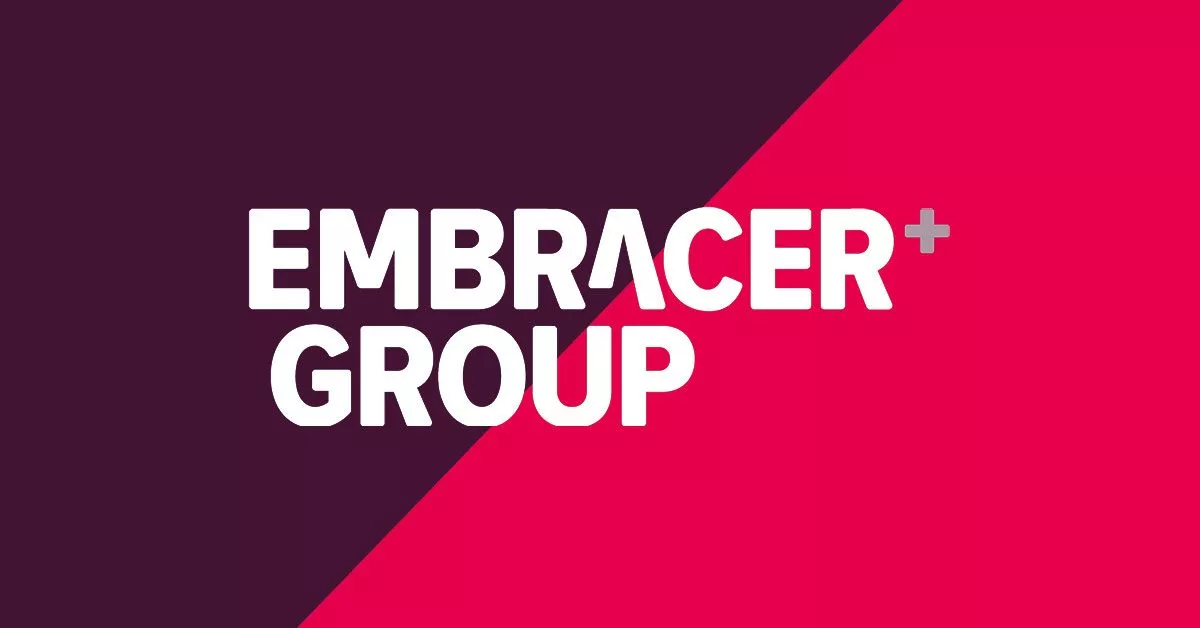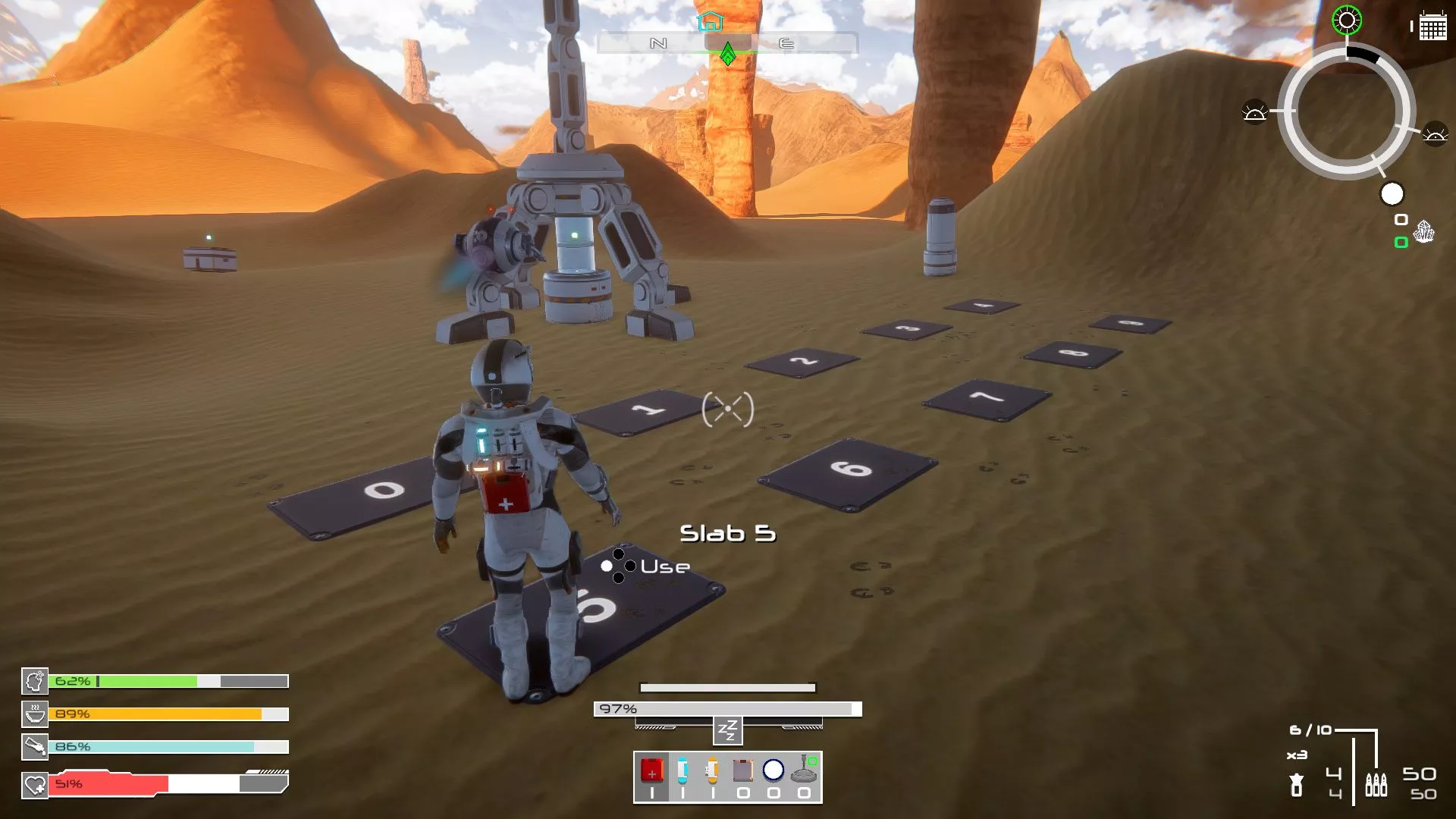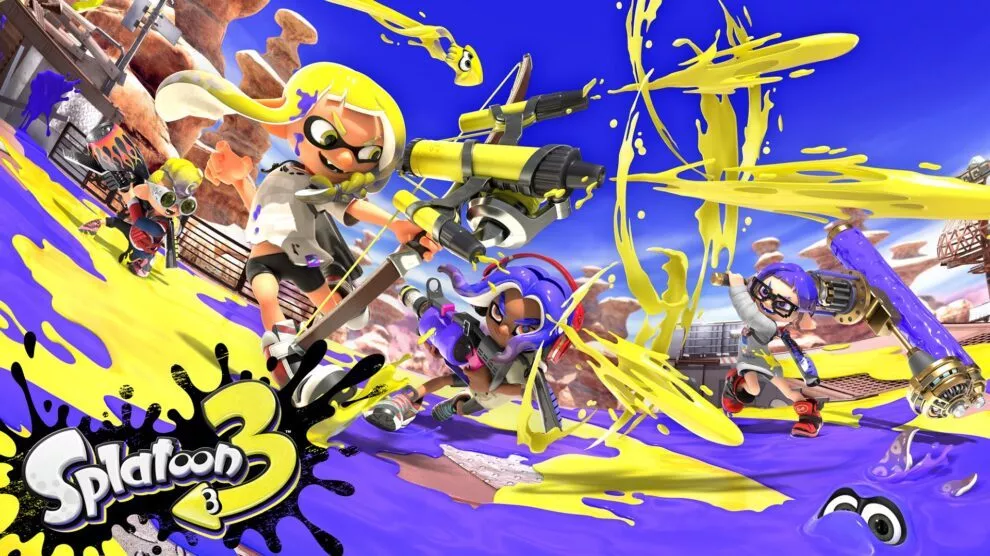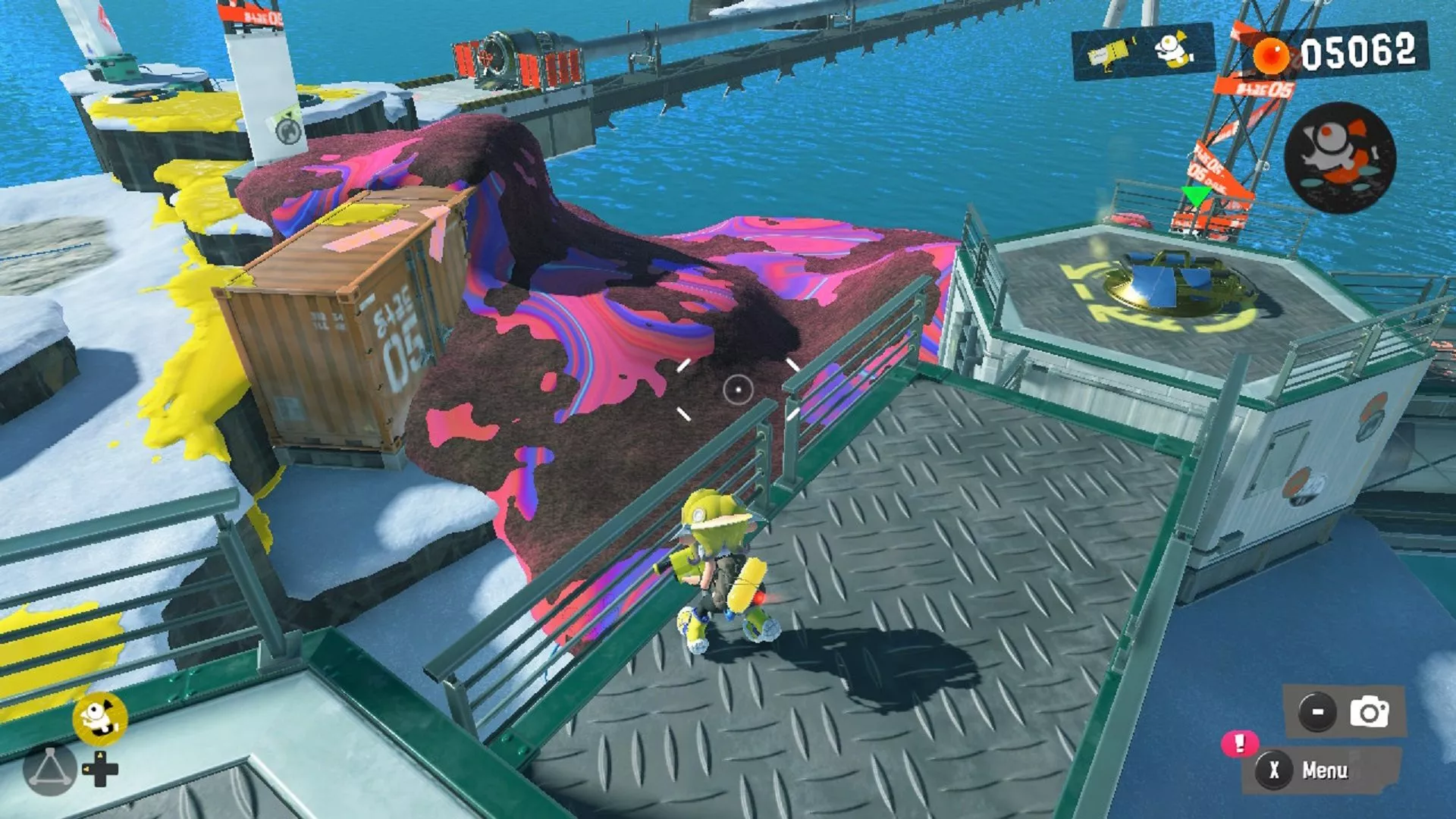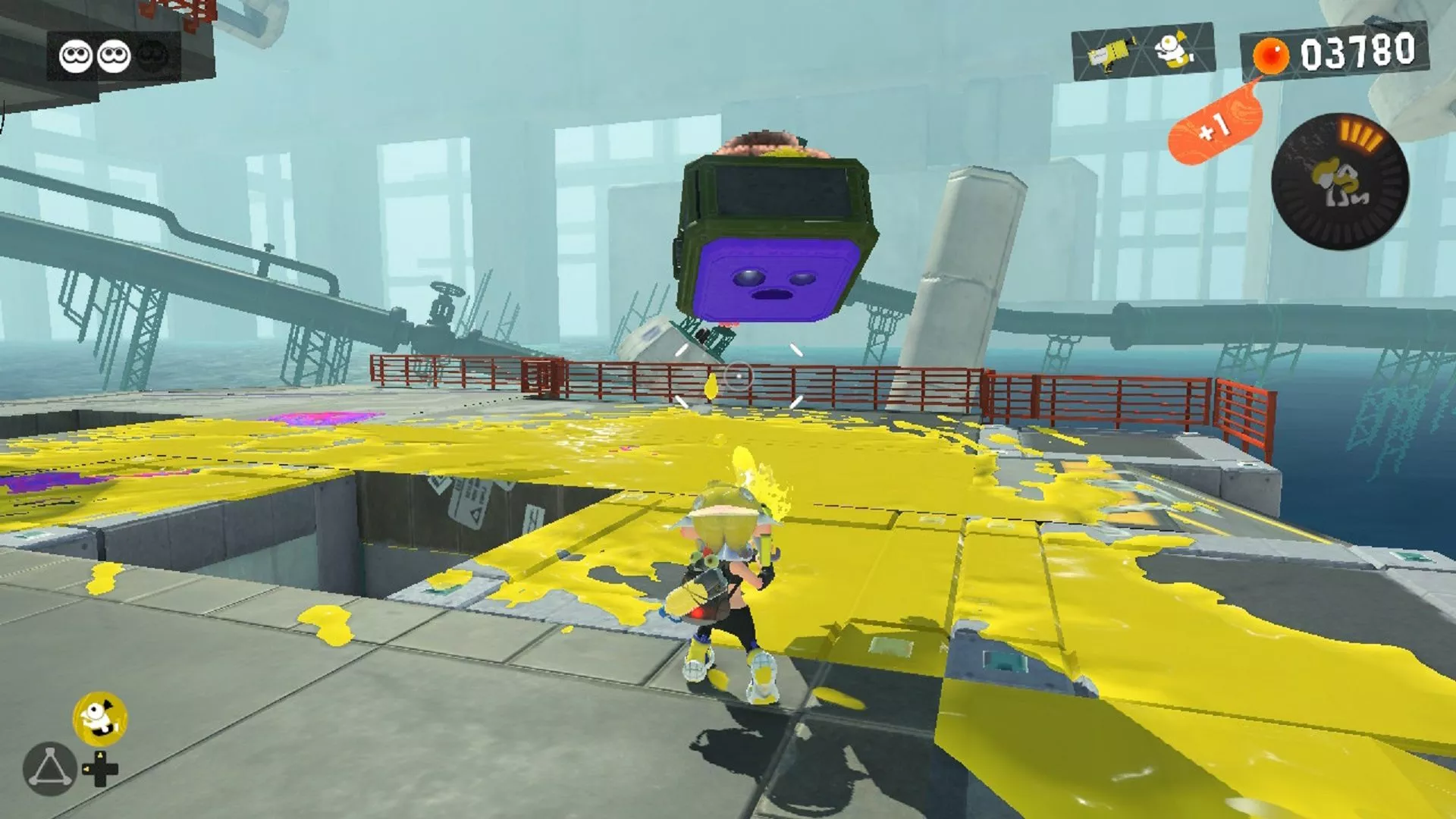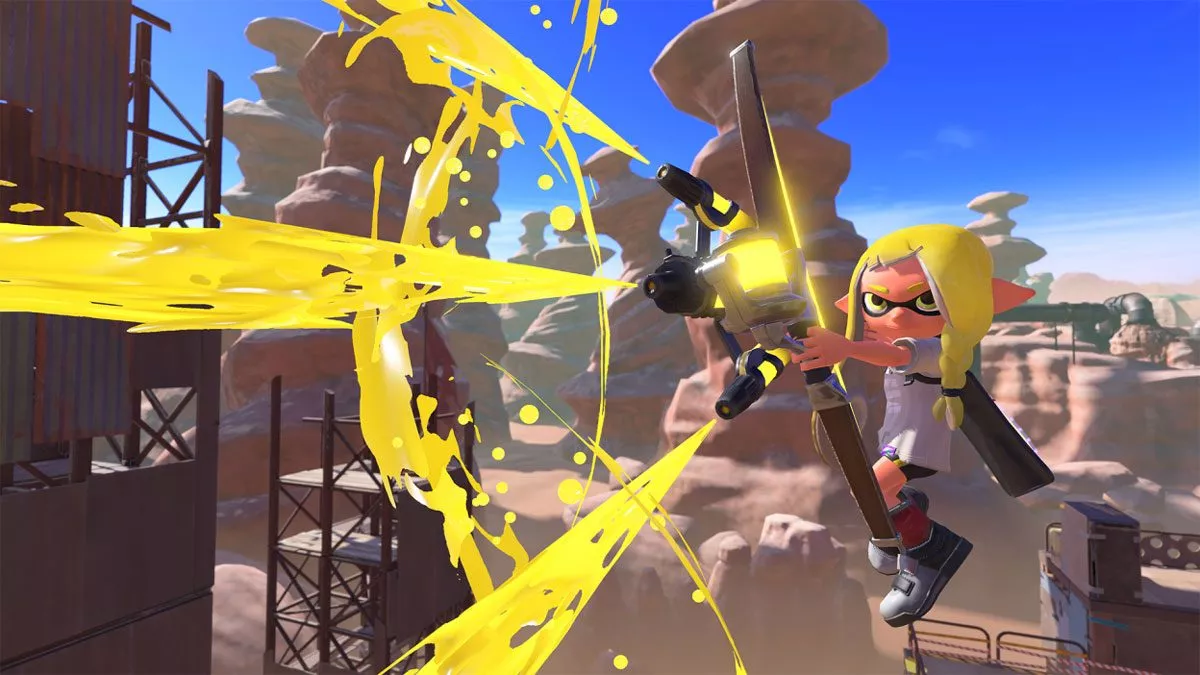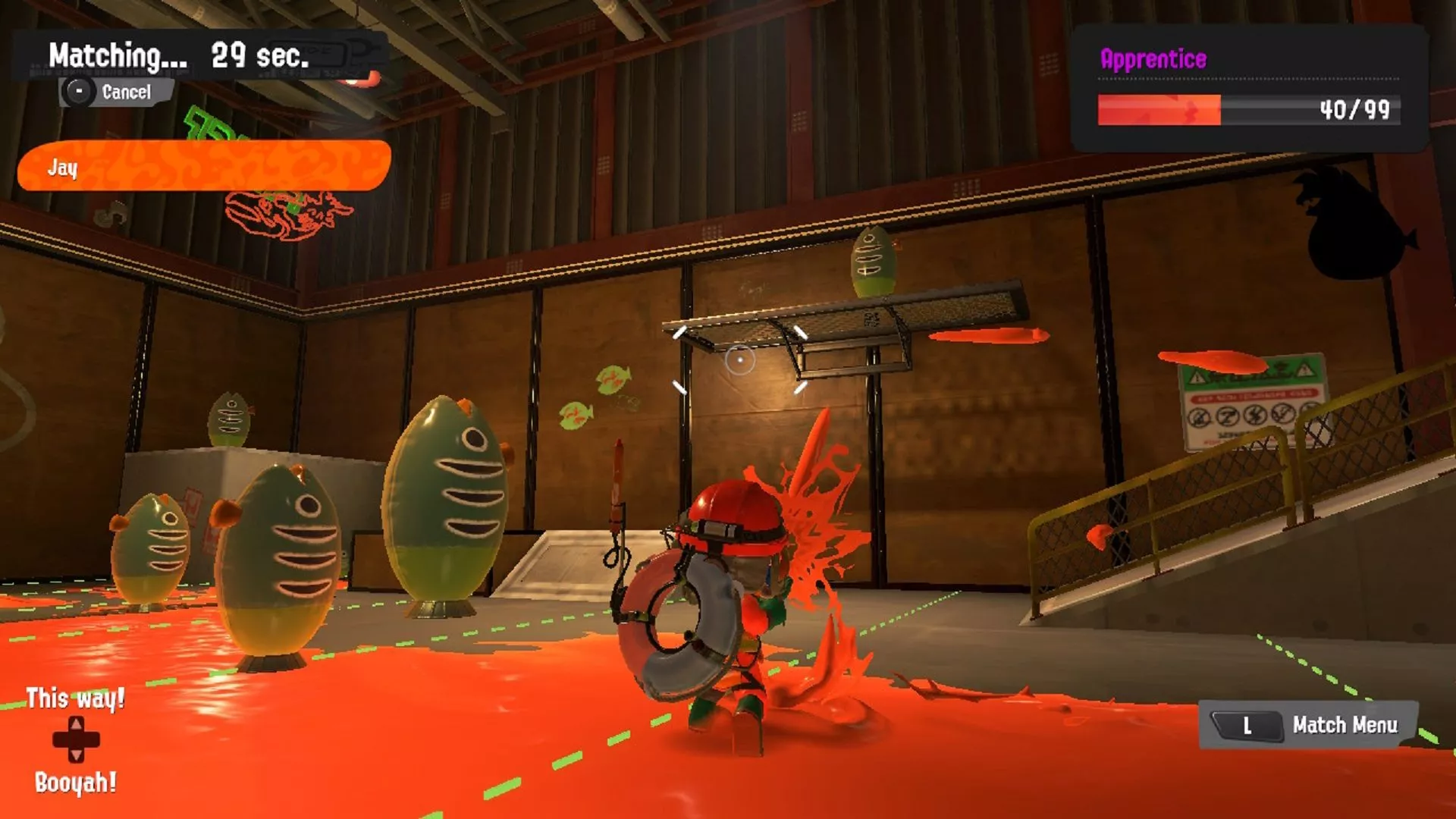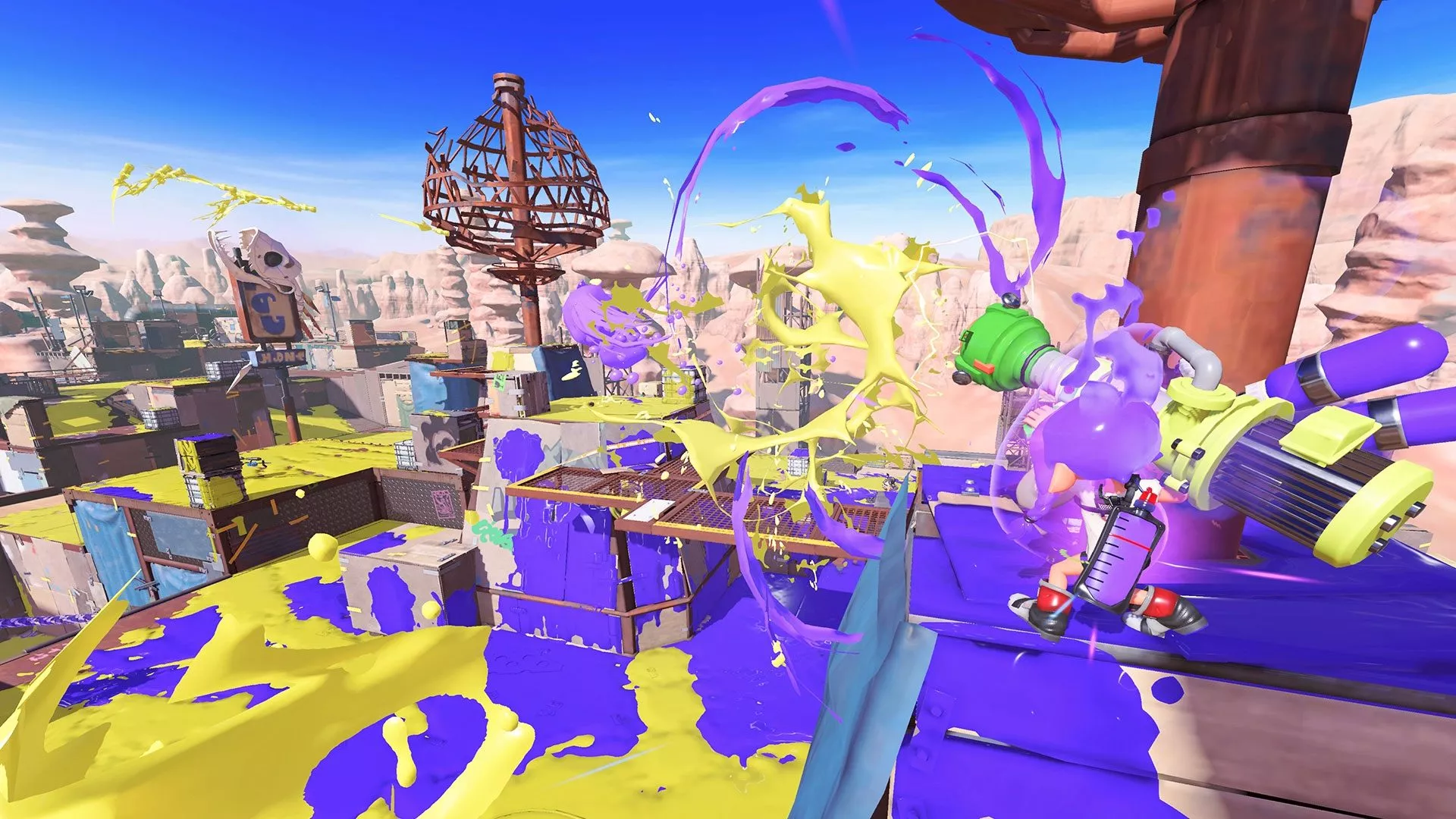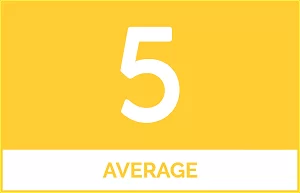I ink, therefore I am.
When Splatoon was first released on the Wii U it was justifiably applauded for its originality, but criticised for a lack of content on offer. Splatoon 2 added a little more to the package; Salmon Run, a co-op horde mode, was a welcome addition that offered up a new way to play while Hero Mode, its single-player campaign, trained players in Inkling warfare and was a fun… but a seemingly tacked-on addition to the title.
With Splatoon 3, the drip-feed of content continues with a few more additions thrown into the mix, though none really make any significant impact on the proceedings overall.
Turf War and Ranked Battles (now called Anarchy Battles) have returned and a much larger campaign takes centre stage. While the campaign is a much more lengthy affair this time around it by no means offers us anything to write home about and the changes to the online experience — not that I can’t say much about that, pre-release.
The campaign, once again called Hero Mode, has your squid-human hybrid Inkling completing a number of challenge missions spread out over a small cluster of islands taken over by toxic Fuzzy Ooze of an unknown origin. The loosely-applied narrative puts you in search of the cuttlefish Gramps, who’s been kidnapped by a trio of wannabe influencers calling themselves The Deep Cut.
Exploring the world will have you finding kettles embedded in the ground which you use to access missions that upon completion award your Inkling with salmon eggs. These eggs are then used to clear the world of Fuzzy Ooze, thus granting access to more kettles and, thus, more missions.
In most cases, the missions themselves simply require you to move from point A to point B, though the methods required to do so are impressively varied considering mechanics. Hero Mode doesn’t require you to complete every mission available, only enough to clear the Fuzzy Ooze blocking your most direct path; I was able to skip the last island almost entirely while still getting to the final boss
Though of the missions I did complete, not once did I spot any repetition which, of course, kept the experience pretty fresh throughout. This should be enough to warrant at least a single playthrough of each level as the highest rewards are earned the first time each mission is completed. Though in what can only be described as a grossly missed opportunity, bonuses for beating personal records are nowhere to be found and you can forget online leaderboards altogether.
This, along with some other strange design choices in Hero Mode, has left me baffled. Those include things like the inability to view or change settings — like turning off motion controls — whilst in a mission area. Or the fact that unlocking hero abilities or upgrades for your Inkling are behind not one, but two, in-game currency paywalls. You’ll first need to access the abilities themselves, and that requires one currency: Sardinium; actually unlocking their benefits requires upgrade points.
Character dialogue, which often tries a little too hard to be charming yet edgy, is once again delivered by text with simlish-like (Inklish?) audio chatter. This might have been cute in 2015 but has now become white noise that you’ll find yourself naturally tuning out very early on in the piece… though it may very well keep the younger players entertained well enough.
Let’s face it, Splatoon has always been targeted at a younger audience and rightly so. It’s likely as close as youngsters can get these days to a multiplayer shooter experience without exposing themselves to excessive violence. Criticising design choices that might appeal to gamers thirty years my junior wouldn’t be fair — especially if those choices don’t have a significant impact on the core experience. Older gamers beware: the chatter can be a bit much on occasion.
Overall, Hero Mode is fun enough and most certainly serves its intended purpose in teaching new players not only the basic game mechanics but the numerous ways a “pro” Splatoon player might move around a Turf War map using much more advanced techniques. Like Splatoon 2, most of the fun in this iteration’s Hero Mode could have been found in the boss battles… if there were only more of them. With only three bosses plus a final main boss, I feel this was another missed opportunity.
On the multiplayer side, Splatoon 3 offers only three modes. Turf War has been around since the original game and has two teams of four players fighting to cover a greater percentage of a map in brightly-coloured ink; it’s arguably considered the main game mode within this experience. It’s as fun as it’s always been and incredibly accessible to players of all skill levels thanks to an impressive selection of weapon types across several classes. Each weapon class has its own specific purpose and place on the battlefield, be it splatting (read killing) enemies which helps your team to push forward, or painting large areas at high speed which is, of course, the primary objective.
Salmon Run has also returned from Splatoon 2; it’s a challenging horde mode that tasks players with splatting standard enemies to earn salmon eggs. Taking down mini-bosses will cause them to drop golden eggs; a certain number of eggs need to be returned to a collection basket in order to complete the round.
I would love to tell you more about Salmon Run in Splatoon 3, but at the time of publishing we were only able to complete the tutorial. Timings not only were difficult to access in the pre-release window for review, but you also needed to be level four, in-game, to access matches. We missed out on an initial window for matches because we were under-levelled, and subsequent attempts to play were unfruitful. Props to Nintendo Australia for trying to get it all sorted, but we’re not as yet ready to weigh in on the overall experience.
That said, we can speak to Salmon Run’s tutorial, which provided just a small taste of what’s to be expected: it’s an always-on version of the same mode that was introduced, periodically, in Splatoon 2… so it’s safe to go back and read Steve’s review from 2017 for more. Or, really, Steve’s earlier preview of Splatoon 3.
The third and final online mode is Anarchy Battle, which is just a renamed version of Ranked Battle from the previous game. It offers several game modes on rotation, though much like Salmon Run, we were unable to experience it in its full potential due to limited online availability and levelling requirements prior to release. To its credit Nintendo Australia certainly to provide more opportunities for online play but it just wasn’t to be so we’ll not be scoring Splatoon 3 until such time as we can provide a fair assessment of all the game has to offer.
Of what I’ve experienced so far, Splatoon 3 is really just Splatoon 2 with a fresh coat of paint. It’s fun, it’s silly and accessible, and still a great way to introduce younger gamers to online multiplayer in a relatively wholesome package. I just wish there could have been more meaningful content in this latest entry. An always-on Salmon Run and a couple new weapons do not make for a new iteration of a franchise.
Post-launch review update
After spending more time with Splatoon 3’s online offerings following its release I can confidently stand by my initial conclusion: it’s simply more of the same. While there’s a few little nuggets of extra content sprinkled over the top, none offer any real additional substance to the experience.
Firstly, actually finding a match is troublesome both using wifi and a wired connection via my Switch OLED model. Games were often disconnected mid-battle, or searching for a lobby would result in an error and a need to search again repeatedly. I’d estimate that of all our time spent reviewing the online modes, about 25% of it was waiting in lobbies.
As for the actual games, all of the online modes become tiresome within a few hours. This isn’t only a failing of each game mode. They’re fine to play and they work well enough when it comes to balancing, fairness and overall gameplay. They just get old quite quickly. Turf War especially though this is primarily due to an initial lack of of access to all other modes — this is where Splatoon 3’s biggest issue resides. As mentioned previously, Salmon Run is unlocked once you have reached level 4. This can be done in around an hour to an hour and a half provided you don’t spend too much time waiting in the pre game lobbies (which you will). With Salmon run unlocked you’ll feel a bit chuffed that you can mix things up a bit with a new game mode to play as you progress to Anarchy Battle once you’ve reached level 10.
But wait…. What’s that? Salmon Run progress doesn’t count towards your levelling towards Anarchy Battle? Back to Turf War you go for at least a few more hours. The fact that all game modes aren’t available from the get go perplexes me and safely it makes Turf War feel more like Turf Chore.
If you’re a Splatoon superfan then you’re likely to find Splatoon 3 just as good as its predecessor. This is not a good thing. Splatoon 3 adds nothing of significance to the series, which is quite disappointing considering that it, as a whole, was bursting with originality when it first launched. It’s certainly easy to pick up and play; it’s not badly made, buggy or broken and the tacked on campaign mode is surprisingly where Splatoon 3 shines thanks to the variety in the missions contained therein. But there’s no good reason to spend your hard earned on a game that essentially came out in July 2017, only to find it forces you into hours of only one repetitive game mode before you get to the good stuff.
Splatoon 3 was reviewed using a promotional code on Nintendo Switch, as provided by the publisher. Click here to learn more about Stevivor’s scoring scale. This review was first published on 8 September 2022.
This article may contain affiliate links, meaning we could earn a small commission if you click-through and make a purchase. Stevivor is an independent outlet and our journalism is in no way influenced by any advertiser or commercial initiative.




